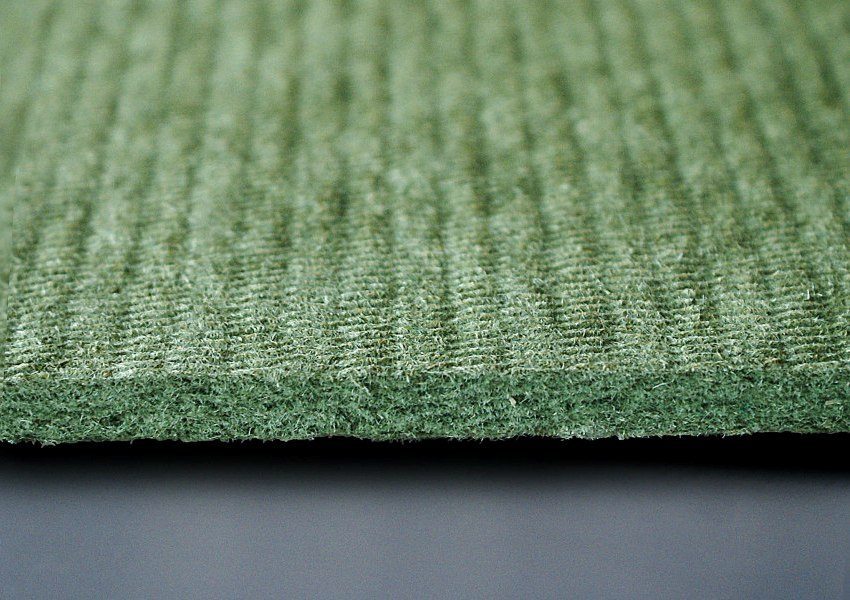Content
- The choice of building mixture
- Cement-based mixes
- Cement-lime mixtures
- Gypsum mixtures
- The advantages and disadvantages of drywall alignment
- Putty application for leveling walls
Everyone wants to admire in their home perfectly smooth, even walls, smooth geometry of lines in the rooms and impeccable decoration. If you are still ahead of the pleasure of perfect repairs, then you are faced with one of the most important questions - how to align the walls?

The walls in the apartment are usually leveled:
- plaster;
- drywall;
- putty (with small differences up to 1 cm).
Each of these methods has advantages and disadvantages. After analyzing them, you yourself can decide which wall alignment material choose and what is best for your apartment.
The choice of building mixture
Today, the construction industry offers a variety of mixes for leveling walls, ranging from sand-cement, cement-lime and ending in demand for individual housing gypsum. What is the difference between the two?
To make the right choice, you must:
- take into account the amount of upcoming work, indoor conditions (for example, humidity);
- with the help of a plumb line and level, approximately determine the curvature and roughness of the walls;
- evaluate your financial capabilities, because the cost of plasters is different, including depending on the brand.

Cement-based mixes
The brand of cement determines the quality of the dry mixture (M300, M400): the higher it is, the stronger the coating. For walls in residential premises, it is enough to choose cement of the M150 brand, which is optimally suited for plastering.
The amount of sand in the mixture and the size of the fractions affect the purpose of the work:
- Sand with larger fractions is suitable for rough rough finishing.
- For fine finishing, a fine grain material is selected.
Modern sand-cement mixtures can not do without special polymer additives that give the material plasticity and improve adhesion.
USEFUL INFORMATION:Variants of wall and ceiling art painting
Advantages of cement-sand mixtures:
- Possibility of use during interior work in a damp room. It is best to align the wall in the bathroom with cement-based mixtures.
- Lower price, which distinguishes them among all building mixtures.
- The durability of the prepared solution.
Disadvantages:
- Tendency to crack, especially if the base of the wall is poorly prepared and pulled all the moisture from the applied layer.
- Long drying time of the layers.
- The complexity of applying to the walls.

We will name some characteristics of a cement-based dry mix:
- The layer thickness for a concrete wall without the use of a reinforcing mesh should not exceed 20 mm, for a brick - 25 mm.
- Consumption is approximately 1.8 kg / sq. m with a layer thickness of 1 mm.
- The price of cement-sand plaster is from 145 rubles per 25 kg.
Cement-lime mixtures
In the range of cement mixtures there is a place and cement-lime. The addition of lime to cement increases the plasticity of the mortar; in its properties, the mortar is close to gypsum, but it is more durable.
Advantages of cement-lime leveling mixture:
- It does not form fungus and mold.
The coating regulates the humidity condition in the room. - The mortar adheres firmly to the wall, including wood and concrete.
- When dried, it does not crumble or crack even when drilling.
Disadvantages:
- Low compressive strength.
- The price is higher than that of cement-sand plasters, from 205 rubles per 25 kg.

Gypsum mixtures
For many, there is no longer a question of how to better level the walls, because gypsum mixtures take the first place in terms of the popularity of plasters. They have excellent leveling ability, thanks to which you can not use putty before finishing, and are very easy to apply.
Let's list other advantages of this material:
- Mineral, environmentally friendly material that does not contain harmful components.
- It does not shrink, does not crack, does not exfoliate.
- It maintains a comfortable microclimate in the room due to the ability to absorb and return moisture.
- Consumption with the same thickness of the plaster layer is 2-3 times less than that of sand-cement mixtures.
- The low density of the material allows you to apply it with a thicker layer in one go, the thickness of which can reach 60 mm.
- Good adhesion and low weight of the material allows its use on poorly absorbed surfaces.
- High ductility and quick setting in contrast to sand-cement mixtures.
- Good heat and noise insulation.
- The result is a completely flat and smooth aligned surface.
USEFUL INFORMATION:Before wallpapering how to process the walls: how and why to primer the walls

Gypsum plaster used to eliminate large irregularities, differences, both in height and in horizontal direction, chips and potholes. It is applied with a thickness of 5 to 60 mm.
Cons of gypsum plaster:
- Not suitable for rooms with high humidity (above 60%). The apartment has a bathroom and a kitchen.
- The speed of work with the finished solution should be high due to the quick setting. You will have to prepare the solution in small portions.
- Low strength.
- The relatively high cost of the product. Gypsum plaster of the domestic brand costs from 275 rubles per 30 kg, the popular “Knauf Rotband” - from 360 rubles.
Gypsum plasters from different manufacturers are similar in their parameters. To properly comply with the operating mode, you must know:
- The working time with the finished solution is about 20 minutes.
- Plaster consumption is approximately 8.5 kg / sq. m with a layer thickness of 10 mm.
- The full drying time of the plaster on the wall is 7 days. Only then is further surface treatment possible - wallpapering, painting, etc.

The advantages and disadvantages of drywall alignment
How to align the walls in the apartment, if you want to make repairs quickly? Drywall allows you to quickly get the result, without messing with the long wait, garbage, dust and dirt. Using this material, you can eliminate even very large differences on the walls vertically and horizontally. And most importantly, all the work can be done independently, without resorting to anyone else's help. Allocate the following methods of mounting GCR on the walls:
- Wireframe methodwhen using which GKL sheets are fixed with screws on a metal profile mounted on the wall with the help of guides and vertical racks fixed to the floor and ceiling.
- Frameless method, which involves gluing drywall to the wall using special compounds. Applicable if the wall has a slight slope.
USEFUL INFORMATION:The sequence of repair of the apartment: features of work in a room with a stretch ceiling

Choosing drywall, you get:
- even and smooth walls with less effort and time compared with plastering;
- the ability to additionally equip sound and heat insulation, as well as conduct covert wiring and install switches and sockets without gating.
But drywall also has its drawbacks:
- Installing a drywall reduces space in the room.
- A wall made of such material is fragile and fragile and can be damaged by accidental impact.
When leveling walls with plasterboard sheets, you need to choose the right type of drywall.

Putty application for leveling walls
Puttying the walls without plastering can be carried out if the wall irregularities are small, within 1 cm. This is possible only in prefabricated houses with smooth concrete walls, the brick will have to be plastered in any case. Putty well fill in the recesses and indentations. The procedure is carried out in two steps: the first layer is applied with a starting putty mixture, and after drying, a finishing layer is applied. Then everything is carefully sanded and cleaned, the wall turns out to be even and smooth.
The most common types of putty mixtures:
- cement;
- gypsum;
- polymer.

The advantage of leveling the walls with putty is the simplicity and ease of use of the finishing material. There are ready-made and dry mixes on sale, which are bred to a thick creamy consistency. The solution is applied to the walls without effort, is easily distributed and lies evenly.
Each layer applied to the wall should not exceed 5 mm, well primed. The room temperature is maintained in the range from +5 to -30 ° C, without drafts and overheating.
Deciding how to align the side walls is not a problem these days. The choice of building materials is huge, you just need to consider the conditions in a particular case. And how to align the walls in the apartment, independently or with the help of specialists, is up to you.

EXPERT SITE
Tsugunov Anton Valerevich
Master Station Wagon
- Since 2003, I have been engaged in the repair and decoration of premises.
- Over 100 completed objects.
- I appreciate the quality, more than the quantity!
Personal page >>>
Friends!
I offer you the service "Friend Builder"
As this site develops, subscribers and visitors are turning to me more and more often asking for help with advice on various issues of repair and decoration.
Questions are sometimes asked very complex and interesting. You can’t write an article for each situation, so I decided to advise you individually.
Thanks to you, friends, a new direction of my favorite work has been born - share your experience and benefit everyone who is undergoing repairs!
Get a one-time consultation from me >>>
Order full apartment repair support >>>


